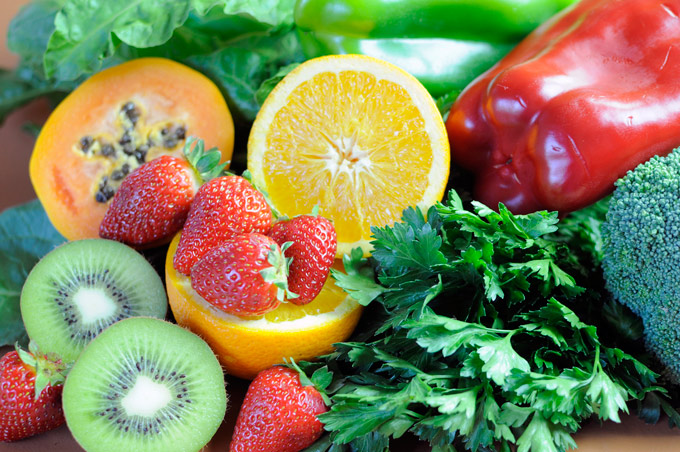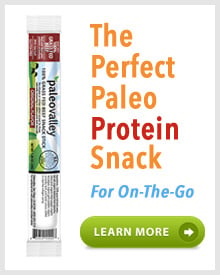
The Top 7 Best Natural Sources of Vitamin C
Did you know that obtaining adequate vitamin C is one way to dramatically improve your health?Since we no longer produce vitamin C, we must make a diligent effort to receive adequate amounts from our diet daily.
According to GreenMedInfo’s database, research has elucidated approximately 220 disease applications for vitamin C. In other words, there are 220 conditions that vitamin C can help treat or prevent. These empirically documented benefits include reducing cardiovascular disease and stroke risk, preventing cancer, alleviating pain in those with fibromyalgia, promoting skin health and bolstering the immune system.
Before you head out to buy a vitamin C supplement, it’s important to note that here is a HUGE difference between natural, food-derived vitamin C and synthetic, ascorbic acid. According to Sayer Ji, founder of GreenMedInfo, in an article entitled 200 Reasons To Love Vitamin C,
“Ascorbic acid is found within the Vitamin C complex as it exists in food, but is only one of a number of inseparable cofactors, such as rutin, bioflavonoids (vitamin p), factor k, factor j, factor p, ascorbinogen, protein chaperones, and various enzymes like tyrosinase, which together in their entirety constitute the whole food complex.”
and also…
“Ascorbic acid is also 10 times more acidic than the naturally buffered Vitamin C found in raw food, and will on occasions lead to stomach upset, calcium loss from the bones, and kidney stones, in susceptible individuals. Traditionally ascorbic acid is produced semi-synthetically from corn or rice starch through a heavily chemical dependent process.”
and finally, according to Szent-Gyorgi who discovered vitamin C in 1937…
“...the vitamin C found in organ meats and food sources like paprika, where the aforementioned cofactors are intact, were far superior in combating scurvy.”
Sayer Ji concludes..
“We would be well served to acknowledge that all raw fruits and vegetables contain a ‘life force’ that can not be fully decomposed or reduced to the chemical skeleton within which the life force of "vitamin activity" works, no more than our life/soul ca be reduced to the $10 or so worth of chemical building blocks that our body is composed of.”
As you can see, food based vitamin C is far superior to ascorbic acid. To make sure you get your daily dose, here are the top 5 sources of vitamin C according to an article entitled, 10 Of The Top Natural Sources of Vitamin C by Food Matters. Read the full article here.
1. Camu Camu
The camu camu berry is one of the world’s most abundant sources of vitamin C. One single teaspoon of camu camu powder has 1180% of your recommended daily intake! That’s 708mg in a tiny dose!
2. Acerola Cherry
The acerola cherry is packed with vitamin C. One tablespoon of powder contains 315mg! That’s 525% of your daily intake with just one teaspoonful!
3. Red Peppers
A cup of chopped red bell pepper contains nearly three times more vitamin C than an orange, providing 190mg.
4. Guavas
Just one half cup of this tropical fruit contains 188mg.
5. Kiwi Fruit
Surprisingly rich in vitamin C, one cup of slices has 167mg or the equivalent of 278% of your daily needs.
6. Goji Berries
The antioxidant rich goji berry also contains a good source of vitamin C. It provides 144mg in just one cup of goji berry powder!
7. Oranges
Oranges are often the first thing most people think of when reaching for a natural dose of vitamin C and with good reason! Citrus fruits in general all provide a good source of vitamin C, but one cup of orange segments will give you 96mg which is 160% of your daily intake.
My take on this:
As was mentioned in the introduction, obtaining vitamin C needs from whole foods is always your best bet. Also, be sure that you buy organic versions which will be free of pesticides and other freaky chemicals found in conventionally raised produce and eat them raw and unprocessed whenever possible!
It is wise to aim for more than 60 mg daily as the Reference Dietary Intake (RDIs) suggest. The RDIs were designed to merely prevent disease rather than promote optimal health. By contrast, the Optimum Daily Allowances (ODA) are a far better indicator of the amount of nutrients required to thrive. I suggest opting for approximately 250-3000 mg of vitamin C per day. In order to accomplish this, try supplementing with a camu camu or acerola berry powder in your daily greens shake. Choose the above foods to meet your vitamin C needs and watch your health thrive!






